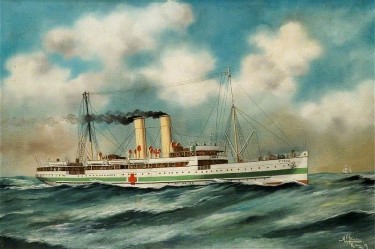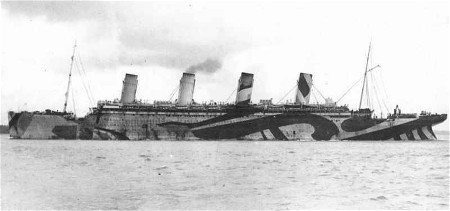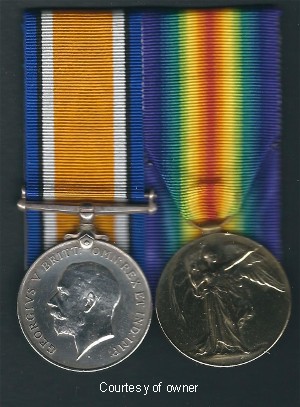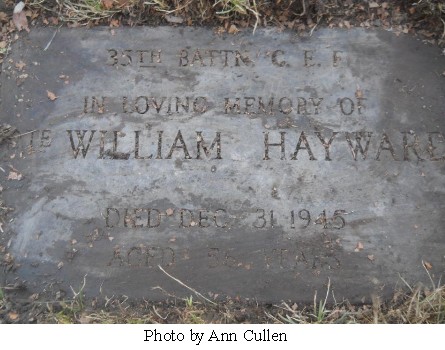|
Mar 5, 1890
|
Born in Caronton, South Wales, United Kingdom to
Thomas and Elizabeth (nee Thomas) Hayward
|
|
Jun 1, 1911
|
The 1911 Census shows him living with his
parents in New Liskard, Ontario
|
|
Jan 22, 1914
|
Married to Mary McQueen in Niagara Falls,
Ontario. Mary McQueen stated she resided in
Niagara Falls, New York, USA
|
|
Jan 11, 1915
|
Shown on the payroll of the 36th
Regiment, Canadian Militia in the Niagara Ontario Camp
|
|
Apr 2, 1915
|
Discharged from the 36th Regiment
|
|
Sep 1, 1915
|
Attested into the 35th Battalion in
Niagara, Ontario
Ø Number 404789
o His number was later changed to 405289
Ø Next of kin given as Mary Hayward, wife, 12 Grey Ave., Mount Dennis,
Ontario
Ø Previous occupation given as Railroad Section Man
Ø Previous military experience given as 10 weeks in the 2nd
Canadian Field Engineers in addition to service with the 97th Regiment,
Algonquin Rifles, Canadian Militia
Ø Religion given as Methodist
Ø Assigned to “B” Company
|
|
Oct 16, 1915
|
Embarked the SS Metagama in Montreal, Quebec

|
|
Oct 25, 1915
|
Disembarked in Plymouth, England
|
|
Apr 1, 1916
|
Transferred to the 21st Battalion
|
|
Apr 2, 1916
|
Arrived at the CBD (Canadian Base Depot) in the
Rouelles Camp, Havre, France and TOS (Taken On Strength) the 21st Battalion
|
|
Apr 20, 1916
|
After leaving the base depot, Private Hayward
joined the 21st Battalion at the front near Voormezeele, Belgium
|
|
Sep 15, 1916
|
During the Battle of the Somme, the 21st
Battalion was assigned the task of capturing a German held sugar refinery near
Courcelette, France that was very strongly defended.
It was the first time that Canadian troops had employed tanks to assist in their
attack. During severe fighting, Private
Hayward received a shrapnel wound that entered his back and exited his abdomen, missing
his spine by 3 inches. He was first evacuated
to the No. 6 CFA (Canadian Field Ambulance) for first aid, then transferred to the nearby
casualty clearing station for further treatment. Due
to the severity of the wounds to his left kidney, he was transferred later that same day
to the Canadian Special Hospital in Warloy, where surgery was performed to repair kidney
damage and to stop internal bleeding.
|
|
Sep 26, 1916
|
Because of severe damage to one of his kidneys,
he was transferred to the No. 13 Canadian General Hospital in Boulogne to receive
treatment
|
|
Oct 12, 1916
|
Invalided to England aboard the Hospital Ship
St. Denis

On arrival in England he was admitted to the
Wharncliffe War Hospital in Sheffield
Transferred to the CCAC (Canadian Corps Assembly
Centre) for pay purposes while in hospital
|
|
Jan 16, 1917
|
Transferred to the Moore Barracks Convalescent
Hospital in Shorncliffe
|
|
Feb 3, 1917
|
Discharged from hospital and reported to the
CCAC
|
|
Feb 6, 1917
|
Attached to the Canadian Discharge Depot in
Buxton
|
|
Mar 10, 1917
|
Transferred to the EORD (Eastern Ontario
Regimental Depot) for pay purposes
|
|
Mar 22, 1917
|
Transferred to the Canadian Railway Troops Depot
at Purfleet to perform light duties
|
|
May 5, 1917
|
Transferred to the
CDD (Canadian Discharge Depot) in Buxton, pending return to Canada
|
|
May 12, 1917
|
Embarked the SS Olympic in Liverpool

|
|
May 21, 1917
|
Disembarked in Halifax, Nova Scotia and
proceeded to Toronto, Ontario where he was admitted to the Spadina Military Hospital
|
|
May 30, 1917
|
Transferred to the Whitby Military Hospital
While enroute to Whitby, he went AWL (Absent
Without Leave) and failed to report to the hospital
|
|
Jun 5, 1917
|
Reported to the Whitby Military Hospital and
following his evaluation, it was decided to treat him as an out patient
Forfeited 5 days pay for his absence
|
|
Jun 21, 1917
|
Transferred to the Spadina Military Hospital in
Toronto
|
|
Aug 27, 1917
|
Discharged from hospital and remained as an out
patient at the Spadina Hospital
|
|
Oct 31, 1917
|
Discharged from the CEF at the Spadina
Hospital
Following his discharge the British War Medal and
Victory Medals (shown below) were sent to him c/o General Delivery, West Toronto, Ontario

|
|
Dec 31, 1945
|
William Hayward died in Kettleby, Ontario from a
Mitral Stenosis that was a complication of a previous stroke. He was buried in the Prospect Cemetery, Toronto,
Ontario

His death was determined to have been caused by
his wartime service.
A Memorial Cross was issued to his widow, Mrs.
Mary Hayward, RR #1 Kettleby, Ontario.
If you know the location of the Memorial Cross,
please contact the webmaster
|
|